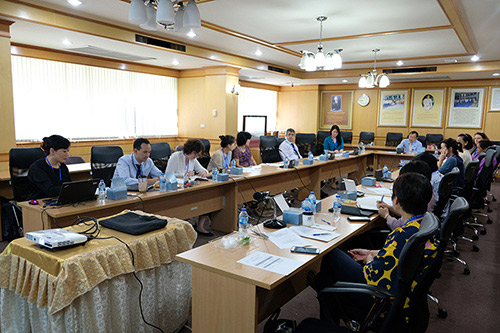An International Collaboration to Model the Adolescent HIV Epidemic in Thailand
How many adolescents in Thailand are living with HIV, how many are newly infected, and how many are under care? A team of researchers from TREAT Asia and the Cost‐effectiveness of Preventing AIDS Complications (CEPAC) research group at Massachusetts General Hospital and Harvard Medical School are working with the Thailand Ministry of Public Health (MoPH) and the Thailand MoPH–U.S. Centers for Disease Control and Prevention HIV/AIDS Collaboration (TUC) to develop a model of Thailand’s youth HIV epidemic to better answer these questions.
“We need a method for better defining and predicting the HIV epidemic among children and adolescents in Thailand,” said Dr. Rangsima Lolekha, Section Chief, HIV Prevention and Care among Children, Adolescents and Family, Global AIDS Program, TUC Thailand. “We are concerned that children and youth, particularly those among key population groups, are disproportionately affected by HIV in Thailand, and we lack data that can help us improve our response.”

CEPAC investigators Dr. Andrea Ciaranello, Director of the Perinatal Infectious Disease Program at Massachusetts General Hospital, and Dr. Sophie Desmonde, Postdoctoral Fellow at the University of Toulouse, France, are leading the development of the epidemic model. TREAT Asia and TUC have worked closely with the MoPH to identify the most reliable local data to use in the model, including coverage of prevention of mother-to-child transmission (PMTCT) services, the number of youth receiving ART through the Thai national AIDS program, the number of new HIV infections among youth, and survival among youth receiving and not receiving ART.

Preliminary results of the model were presented to Thai pediatric and youth HIV care providers, along with experts from academic institutes, government, and HIV/AIDS organizations, at a stakeholder meeting in Bangkok in October 2018. Participants also discussed how the model could be improved and linked to pediatric and youth HIV policy and program improvement. As the model is finalized over the coming months, it is hoped that adolescent HIV data gaps and future research and policy priorities will be further clarified.

“If successful, our model might provide the basis for a Thailand-specific pediatric and adolescent HIV epidemic model in Asia that could be used by national-level stakeholders to better inform strategic planning, policy, and programming,” said Dr. Ciaranello. “It is vital that we also focus attention on local capacity to use the model and improving its ‘user-friendliness’ to allow Thai partners to adapt estimates in the future, as new data emerge.”
Share This:
